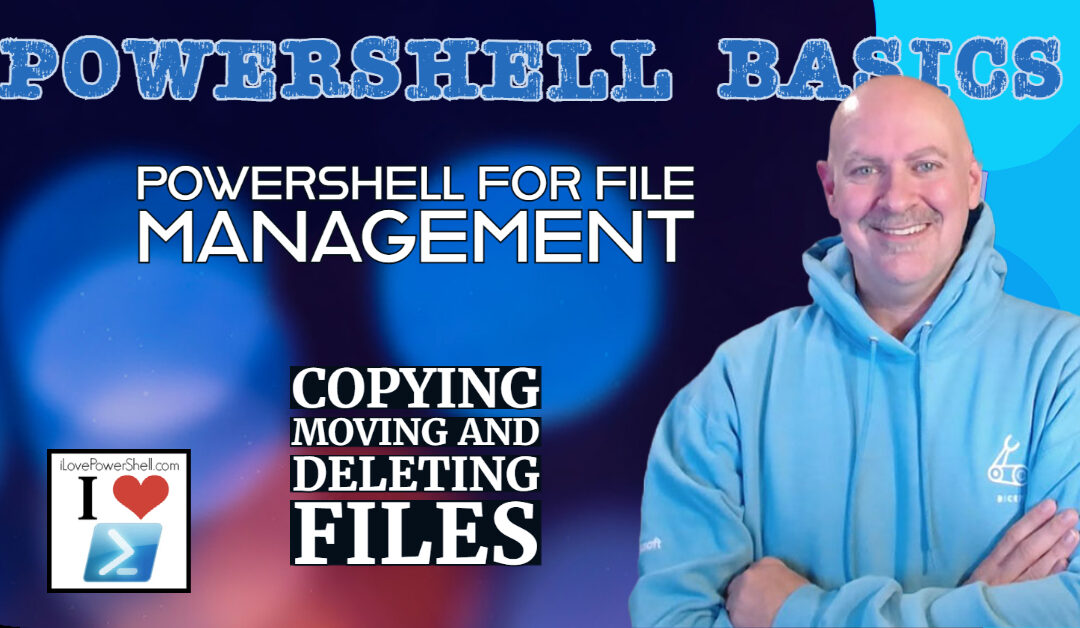Introduction
PowerShell is a powerful scripting language and automation tool that is essential for system administrators. One of the critical tasks administrators perform is managing files across the file system. In this article, we will cover the basics of file management using PowerShell, including copying, moving, and deleting files.
As a beginner, you might find some of the concepts challenging, but don’t worry; we’ll walk you through each step with clear explanations and code snippets. Remember, learning new skills and practicing regularly are the keys to mastering PowerShell.
Setting up Your PowerShell Environment
Before diving into file management tasks, ensure that you have PowerShell 7 installed on your system. PowerShell 7 is cross-platform and works with Windows, macOS, and Linux.
You’ll also want to install Visual Studio Code (VSCode). VSCode is a versatile and powerful code editor that is perfect for working with PowerShell scripts. Make sure you have the PowerShell extension installed in VSCode for enhanced PowerShell support.
Navigating the File System with PowerShell
To navigate the file system in PowerShell, you can use the Set-Location cmdlet (alias: cd). For example, to change the current directory to “C:\temp”:
Set-Location "C:\temp"
To list the files and folders in the current directory, use the Get-ChildItem cmdlet (alias: ls or dir):
Get-ChildItem
Copying Files with PowerShell
To copy files, use the Copy-Item cmdlet. For example, to copy a file called “file.txt” from the current directory to a folder called “backup”:
Copy-Item "file.txt" -Destination "backup"
To copy multiple files, use wildcards:
Copy-Item "*.txt" -Destination "backup"
This command copies all “.txt” files from the current directory to the “backup” folder.
Moving Files with PowerShell
To move files, use the Move-Item cmdlet. For example, to move a file called “file.txt” from the current directory to a folder called “archive”:
Move-Item "file.txt" -Destination "archive"
To move multiple files based on a condition, use the Where-Object cmdlet (alias: ?):
Get-ChildItem "*.log" | Where-Object { $_.LastWriteTime -lt (Get-Date).AddDays(-7) } | Move-Item -Destination "old_logs"
This command moves all “.log” files older than 7 days to the “old_logs” folder.
Deleting Files with PowerShell
To delete files, use the Remove-Item cmdlet. For example, to delete a file called “file.txt”:
Remove-Item "file.txt"
To delete multiple files with a specific extension, use wildcards:
Remove-Item "*.bak" -Force
This command deletes all “.bak” files in the current directory. The -Force parameter is used to suppress confirmation prompts.
Combining File Management Tasks
You can combine tasks to create powerful scripts. For example, to copy all “.txt” files to a “backup” folder and then delete the original files:
Copy-Item "*.txt" -Destination "backup" Remove-Item "*.txt"
Best Practices and Tips For Working with Files in PowerShell
- Use aliases like `cd`, `ls`, and `?` for efficiency, but remember to use the full cmdlet names in scripts for better readability and maintainability.
- Use the `-WhatIf` parameter to preview the result of a command before executing it, which helps to prevent unintentional changes or data loss.
- Make use of variables and pipelines to store data and pass it between cmdlets. This allows you to create more efficient and flexible scripts.
- Automate repetitive tasks by creating scripts that perform complex file management operations. This will save time and reduce the possibility of human error.
Continuing Your PowerShell Journey
As you continue learning PowerShell, remember the importance of practicing and applying your new skills to real-world scenarios. Seek out a mentor or enroll in a course to deepen your understanding of PowerShell.
Explore additional resources, such as the official PowerShell documentation and community forums, to learn about new cmdlets and techniques.
Conclusion
In this article, we covered the basics of file management using PowerShell, including navigating the file system, copying, moving, and deleting files. As you practice and apply these skills, you’ll become more proficient in using PowerShell for various tasks.
Keep learning, experimenting, and discovering new techniques to become a more effective and efficient system administrator. PowerShell is a powerful tool that can help you automate tasks, manage systems, and troubleshoot issues, so keep exploring and building your skills.


